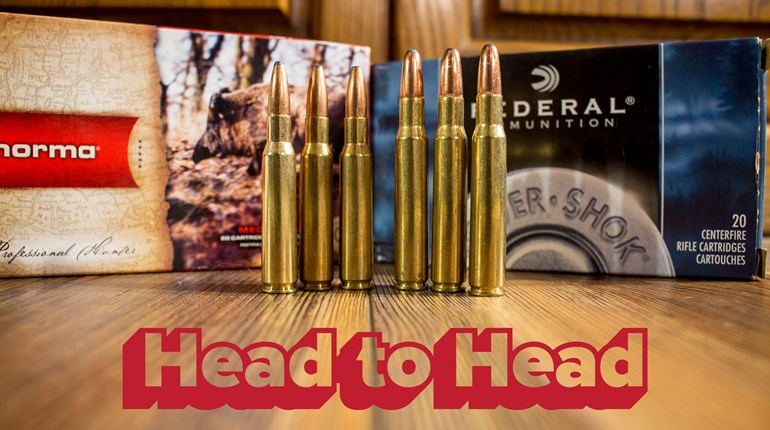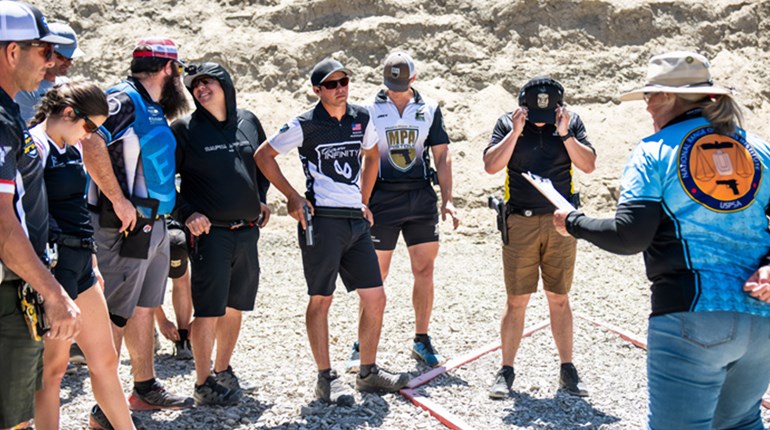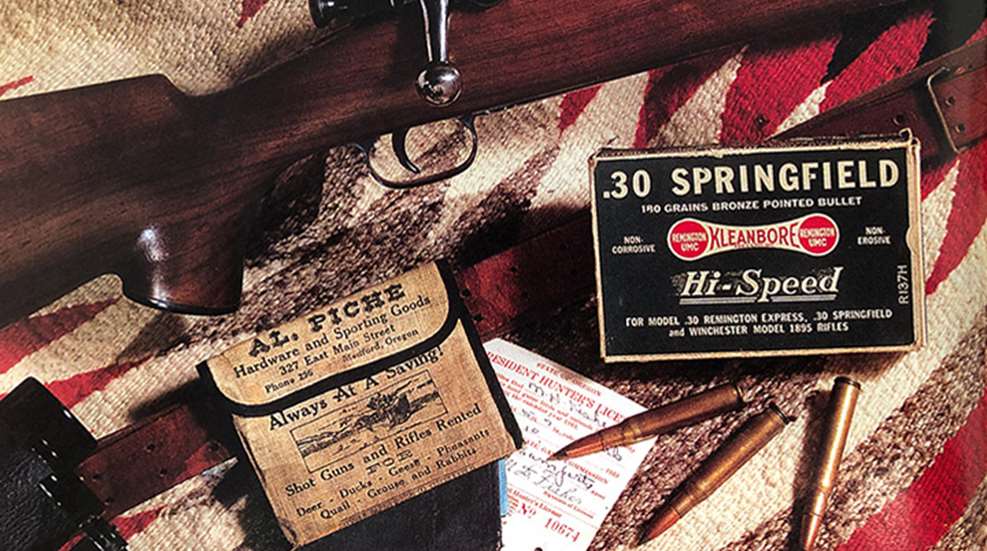
From the vault: Craig Boddington examines the venerable .30-06 cartridge. As published in October, 2001.
When In Doubt, Get A .30-06
By Craig Boddington
I consider myself fortunate to have been in the business of writing about guns, shooting and hunting for nearly 25 years. Sure, I have my complaints—too much travel, deadline pressures, dealing with editors. But I don't whine too much, because I have yet to run into someone I'd trade places with. However, one of the problems associated with my line of work is writers tend to get stereotyped, sort of like an actor who can never quite regain his own identity after playing a popular role. Jack O'Connor, for instance, is indelibly stamped as a .270 Winchester man—even though he used, wrote about, and even liked a wide variety of cartridges during his long career.
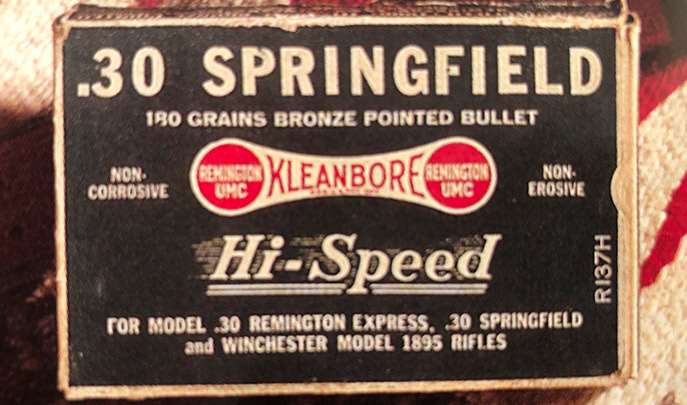
From the mail I get, it seems that I've been stamped a champion of the fast-stepping, hard-kicking, eardrum-splitting magnum cartridges. This stigma is one of very few regrets I have about my chosen occupation. Sure, I have used a wide variety of magnums in my 35 years of big game hunting: Flat-shooters like the .270 Weatherby and .264 Winchester magnums; versatile 7 mm and .30 magnums; hard-hitting .33-calibers; and on up to the .375s, .416s and beyond. Apparently I use them enough that I have been branded by many as a "magnum maniac," or, to coin a new word—magniac. I'd like to set the record straight.
Sometimes I use these big or fast (or big and fast) cartridges because I think I might actually need their performance, whether for extra-large game or in extra-open country. A lot of the time, however, it's because of you good people that I use—and write about—the eargesplitten loudenboomer magnums. We Americans love performance, whether in cars, boats, motorcycles or rifles. (The analogy continues with the phrase, "whether we need it or not.") We are also interested in things that are new. Since we thirst for performance, a lot of the new cartridges are high-performance numbers. So, at least in part, I use and write about the hot new cartridges because they're new, and you want to read about them.
It doesn't bother me all that much to be branded a magniac. It does bother me that I don't use my own rifles as much as I would like to. It also concerns me that the wrong impression may be given to newer hunters and shooters, who may get the idea that they can't be successful unless they have in their hands the newest, fastest, and most powerful "Hammer of Thor." This is simply not the case.
Mind you, there is nothing inherently wrong with performance. It's obvious that you need a more powerful cartridge to hunt Cape buffalo than is needed for whitetail deer. It's equally obvious that velocity flattens trajectory, so a modern high-velocity cartridge is easier to use at longer ranges. But—and here's the tricky part—it isn't always easy to determine how much performance you really need for your hunting.
Always remember that there are costs associated with magnum performance—real costs, in that ammunition is always more costly, and rifles usually so. More subtle costs include increased gun and ammunition weight. The most important costs of all are increased recoil and muzzle blast. Depending on the person, these can be mildly unpleasant, or they may be downright painful enough to prevent you from shooting as well as you are capable. This is not only counter-productive but also downright disastrous ... and I see it in the field all the time.
Performance cannot replace marksmanship. All of us have different tolerances for recoil. Your upper limit depends somewhat on shooting experience, but has very little to do with your age, gender or physical build. Regardless of what you read, if you go beyond your comfort level your shooting will suffer. There are a whole lot of people out there toting powerful magnums who simply cannot handle them. And there are even more magniacs out there in the woods who have no genuine need for the level of performance they are toting.
These days I carry the stigma, but there was a time when I truly was a magniac. When I was a kid, I devoured all the gun magazines; of course believing everything I read. This was in the early 1960s—the height of the magnum era—and at an early age I came to believe that a cartridge needed a belt and a big case to be effective on game. My first centerfire rifle, like so many hunters of my generation, was a .30-06 Springfield, but I never actually hunted with it. I started with a .243 Winchester, a good choice; then "graduated" to a .264 Winchester Magnum that I thought was pure magic. Before too long I had a .300 Winchester Magnum, and then a .375 H&H. I had little genuine need for a .375, but I used it a lot anyway—on deer, pronghorn, sheep, even prairie dogs with light bullets and reduced loads. In those days I had little field experience, but I had wonderful reflexes and it never occurred to me that recoil was a bad thing. I shot extremely well, and of course I attributed much of my success to the magnum power I was packing.
My epiphany came on my first African safari in 1977. I had my .375, in itself all the gun I really needed. Conventional wisdom told me that I also needed a light rifle. I could have taken the .264 or the .300, or my perfectly good .270; all would have done just fine. I guess I needed an excuse for a new rifle, perhaps I'd been reading too much. In 1909, Roosevelt relied heavily on his .30-06. On his 1935 Green Hills of Africa safari, Hemingway used little else besides his Griffin & Howe Springfield. In 1952, on his Horn of the Hunter safari, Ruark also did his best shooting with a .30-06, his a simple Remington. So I decided I had to have a .30-06.
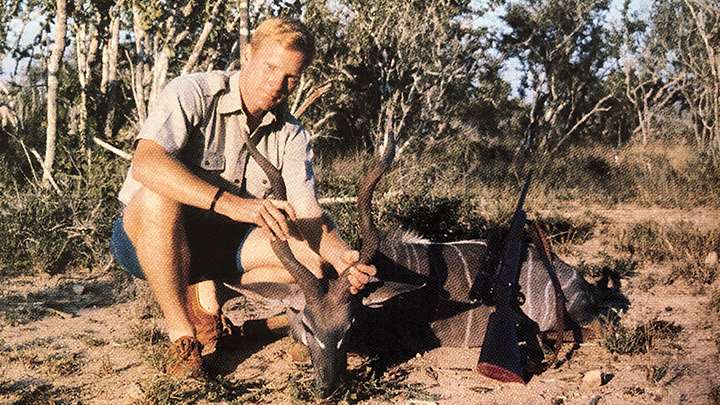
I bought a brand-new Ruger Model 77 and topped it with a 3-9x Redfield scope. Stoked with 180-grain Nosler Partitions in front of a heavy charge of good old IMR 4350 powder, I was getting pretty close to 2,800 fps, plenty fast but hardly "magnum" velocity. Performance, however, was "magnum" all the way.
Other than buffalo and eland, the .30-06 was used for all the game taken, this on a 21-day safari in a day when bag limits were higher and game generally more plentiful than is the case today. At first I missed a bit—like I said, I didn't as much field experience as I thought I did. Then I hit my stride, and that plain-vanilla .30-06 racked up an incredible string of one-shot kills. It reached out to 350 yards and more on small-bodied antelope like gazelle and impala, and on large, tough antelope like hartebeest and oryx. It flattened hefty game like waterbuck and even heftier game like zebra. It enabled precise shot placement on tiny antelope like dik-dik and steenbok across clearings, and it worked just as well on brushbuck and lesser kudu in thick cover.
That lowly .30-06 taught me lessons I have never forgotten. Not that they were new lessons, the .30-06 has been America's most popular hunting cartridge since the 1920s. But since I was fast becoming a dedicated magniac, the lessons were new to me. The rifle was accurate and easy to shoot, so I shot it well. It was plenty powerful enough for game up to zebra—which weigh about 800 pounds—and it shot flat enough for any shots I had any right to take. Of great importance, bullet performance was perfect. This is not to say the Nosler Partition is perfect. It's a very good hunting bullet, but, like most .30-caliber hunting bullets, it was ideally matched to .30-06 velocity. All combined, I did great work with that .30-06, and it did great work for me.
I use, and admire, a lot of different hunting cartridges. I also use a fair number of cartridges that may be perfectly effective, but I just can't warm up to because, as I said, business is business, and my business is generating articles. Ever since that Kenya safari 25 years ago, the .30-06 has remained a cartridge that I use and for a tremendous amount of game.
A partly-sporterized 1903 Springfield, my first rifle, is among the four. It is the only right-handed rifle I still own, but I wouldn't part with it. Another is a left-hand Model 700 from the Remington Custom Shop, a wonderfully accurate rifle in good wood with a fairly stiff 22-inch barrel. It has taken game in Europe and Africa, as well as all over North America, and I can always count on it. Likewise, a synthetic-stocked .30-06 made by Kenny Jarrett, also on a left-hand Remington M700 action, but with a 24-inch barrel. This rifle is even more accurate, and I haven't used it as much as I should have. But it's been to places as diverse as the Sonoran Desert and the Australian Outback. Most recently I carried it on a Saskatchewan whitetail hunt, where it reached out 275 yards across a snowy field to anchor a big-bodied northern buck.
Both of these rifles wear mid-range variable scopes. The old Springfield and my final personal .30-06 is an open-sighted rifle. It is new to me, but is a very old rifle. Built in the 1920s by a Pennsylvania gunsmith named Sedgely, it's a light, trim sporter with a good receiver-mounted aperture sight and front bead. Built on a 1903 Springfield acton with a unique difference, it's been converted to left-hand bolt. It is surprisingly accurate, and I shot a good wild hog with it just a couple of days ago.
Then there are all the test guns chambered to .30-06 that I've shot and sometimes hunted with over the years, far too many to recall. The .30-06 is not the only cartridge I use, far from it, but I've used the .30-06 on five continents. The game it has taken for me includes animals often taken at longer ranges, such as Coues whitetail, pronghorn, sheep, goats, open-country African antelope, and large, tough game such as elk and bear. I can't say that I have never missed with a .30-06, but I can say that the cartridge has never let me down when I have done my part.
I'm often asked what my favorite cartridge is. That's tough, because I have to respond with a question of my own: Favorite cartridge for what? I tend to like the .33s for elk and bear, and even though I rarely need the capability, I lean toward faster cartridges for sheep "just in case." For really big game like Cape buffalo I like big cartridges. So the best I can give you is that the .30-06 is one of my favorites. Even though it's 95 years young, it is still one of the most versatile and user-friendly of all our sporting rounds.
Why? First of all, despite all the magnum bullets that surpasses it, the .30-06 is a very powerful cartridge. With any of the hunting bullets, from 150 grains upwards it develops around 3,000 ft.-lbs. of muzzle energy. Coupled with the right bullet design, this is "enough gun" for any game in North America, and enough gun for medium-sized game everywhere else in the world.
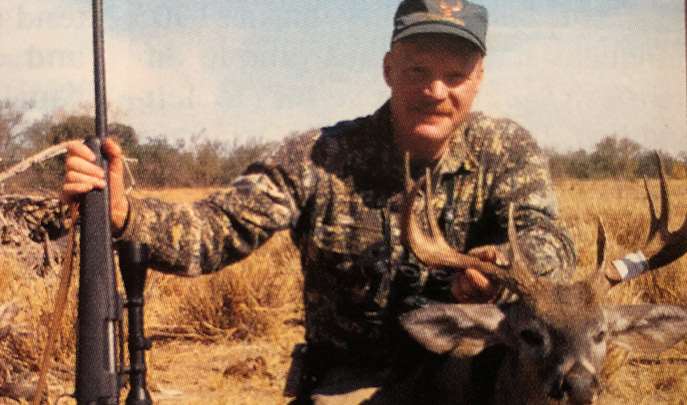
Second, although considered "slow" in comparison to the fastest magnums, the .30-06 actually shoots quite flat. With a 165-grain Spitzer at "standard" velocity zeroed at 200 yards, the drop at 300 yards is about eight inches. Faster handholds are possible, and both Federal's High Energy and Hornady's Light Magnum loads boos that same 165-grain bullet to over 3,000 fps, and cuts more than an inch off the drop with the same zero. This compares surprisingly well with "flat-shooting cartridges" like the .270 Win. and 7 mm Rem. Mag. I don't consider the .30-06 a long-range cartridge any more than anyone else does, but don't sell it short. It has made some of the longest shots I have personally ever made in the field.
The third thing the .30-06 has going for it is its longevity and popularity. It is the most developed sporting cartridge. There are more factory loads available for the .30-06 than for any other cartridge in the world, and they range from Remington's 55-grain Accelerator all the way up to 220 grains. There are varmint loads, aerodynamic loads, and hard-hitting round-noses. Development continues with faster loads (like the High Energy and Light Magnum), and better bullets. The selection of component bullets is even more robust, ranging from 110-grain "plinkers" to 250-grain heavyweights. There are volumes of loading data for the .30-06, and the best news is that, since the .30-06 is the most popular .30-caliber cartridge, almost all .308-inch hunting bullets are designed to produce optimum performance at .30-06 velocities. So the fourth thing the .30-06 brings to the table is consistent bullet performance.
Then, of course, there is accuracy. The .30-06 isn't as inherently accurate as the .308 Win., but it is a wonderfully accurate and usually non-finicky cartridge. Even if you run into a finicky one, there are enough loads to try that something is almost certain to work out. I can't recall ever getting my hands on a .30-06 that wouldn't shoot fairly well, and many have been spectacular.
And you can have all this with mild recoil. Mind you, the .30-06 is no pip-squeak. A light .30-06 can belt pretty hard, and I don't consider it a beginner's cartridge. The worst scope cut I ever got was from my old Ruger m77. I was lying in an awkward prone position on top of a big boulder, shooting at a big buck on the far side of the canyon. I got the deer, but the rim of the ocular lens made a real mess of my forehead. So the .30-06 shouldn't be taken lightly. It's a real rifle for serious use—but in a sporter of moderate weight its recoil is very tolerable, well within the range that most shooters can deal with easily. It is efficient enough to produce good velocity with a handy 22-inch barrel, while its magnum competitors almost must have 24-inch tubes and really need 26-inch barrels to strut their stuff.
All of these things add up to superb performance in the field, and great versatility. In the post-war era, Grancel Fitz was the first man to take every variety of North American big game, and he did it all with his Griffin & Howe Springfield in .30-06. Much more recently my friend J.Y. Jones accomplished the same feat, using only his well-worn Remington .30-06. I would never suggest that the .30-06 is the ideal pronghorn or sheep rifle. It is needlessly powerful for the former, and there are indeed flatter-shooting rounds that are more ideal for the latter. I would also not suggest that it's ideal for the big bears. With heavy, well-constructed bullets it will do the job, but there are better tools. Still, it can do all these things—and everything else in between. Which means the full range of deer, elk, caribou, and thin-skinned game everywhere else in the world. Sighted correctly and matched with an aerodynamic bullet, the .30-06 can easily reach to 350 yards are more, as far as most of us need to shoot (or have any business trying to shoot). It works up close just as well.
I don't like to be asked about my own favorite cartridge, because that's a loaded and complex question. Besides, what I use shouldn't be important, because many of the cartridges I use are due to circumstances and obligations beyond my control. What's important is using a cartridge that you can shoot well and one in which you have confidence. Just as frequently I'm asked about an ideal cartridge for whitetail, or for elk and mule deer. Often the interrogator starts by saying he's considering one or another 7 mm or .300 magnum, frequently as an "upgrade" in power from something like a 6 mm or .270 Win. Usually the question or letter ends by stating that he or she wants versatility and power but will probably not shoot beyond some stated distance this side of 400 yards.
We're in a new magnum era today, with a number of brave new cartridges that offer truly wonderful performance—but almost always at a cost in gun weight, recoil, muzzle blast, price of ammunition, and/or availability of loads and loading data. Performance is good, and you may actually need it—but there's a limit as to how much performance most of us really need, and how much cost we should bear in order to get it. I fear we're breeding yet another generation of magniacs, because at least one good answer to most cartridge questions has remained the same since 1906—but I get very few queries that mention the great old .30-06. So if you're totally confused about which cartridge you really need, just remember you heard this adage from the old magniac himself: "When in doubt, choose a .30-06." After 95 years, it will still do, and do well, almost everything American hunters need to do.
See more: Opinion: The .30-06 Is Dead














